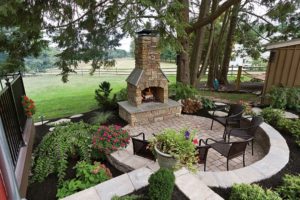While décor stone, flagstone, boulders, and rocks are known as hardscape, trees, foliage, soil, flowerbeds, vegetable gardens, grass and shrubs constitute the softscape. The best way to layout a good plan for your garden is to have a combination of hardscape and softscape in well planned areas of your yard.
As the name implies, hardscape is all about the hard surfaces your yard is made of. On the other hand, a yard without softscape would not have the artistic feel a good yard will have just like reading a book without anecdotes and quotes that decorate the reading to make it interesting.
Softscape is the poetry infused in the landscaping to give it that artistic look every good lawn should have. Hardscape takes care of the spaces to create contrast, areas of proportions, patios, decks, driveways and gates. Hardscape and Softscape are like a married couple that go hand in hand complementing each other.
Softscape beautifies a lawn with its beautiful colors, textures, styles, sizes of the various plants, flowers and bushes giving that spicy flavor every good meal would have.
Hardscape includes all those areas of the yard with inert material that don’t absorb water, rather repel it due to the hard surfaces used, water from rain storms, from regular watering the garden, or even from spills.
However, in some cases, a negligible bit of water absorption may occur. This typically happens when the use of gravel and bricks that are marginally permeable. Hardscape is utilized in the early stages of the landscaping process to designate a certain area for these types of surfaces with a desired in mind to add an specific shape and features. For instance, boulders may be used to separate grass areas from a bed of gravel and flower planter areas; stepping décor stones are regularly used as a trail to navigate around the garden; décor walkways add contrast and convenience for the front entrance, etc. Hardscaping protects the soil from erosion, from wasting away in hilly areas plus add beauty and style to the overall look and feel of the property.
Softscaping is the living, moving, and growing part of the landscape. Due to the advancement in landscaping design programs, softscaping can easily be explored in temporary areas to assess the look of the yard, then it can be implemented throughout the yard as previously planned. Softscaping can have permanent features such as tress and shrubs and temporary like seasonal plants and flowers which grant their colorful features and character to trails, walkways and driveways.
A proper and exhaustive planning of these elements in an aesthetically attractive manner is the cornerstone of effective gardening.
Written by Jovick McCloud

